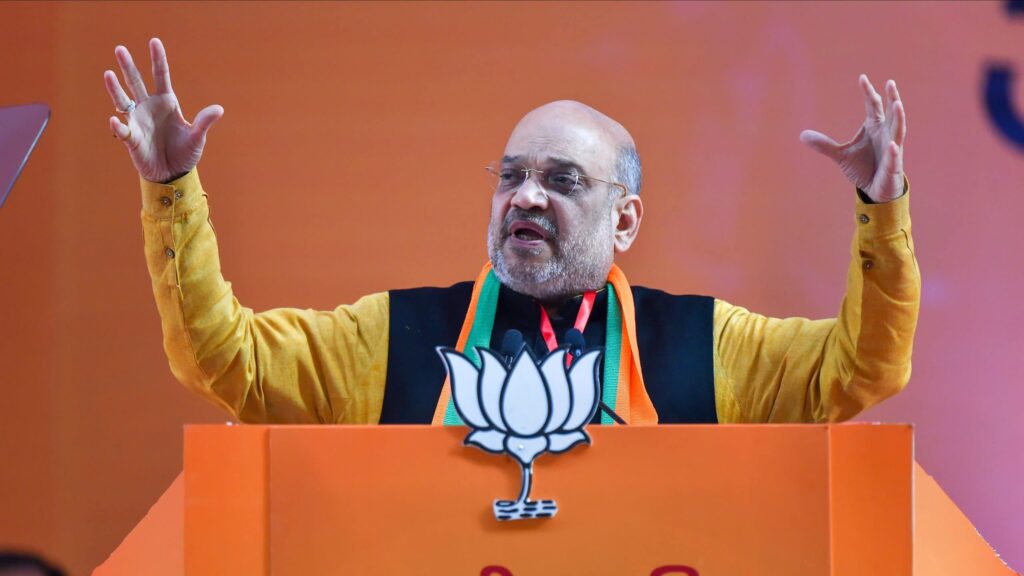The Bharatiya Janata Party (BJP) has unveiled its much-anticipated list of candidates vying for legislative seats in the mountainous state. The announcement of the candidate list marks a crucial step in the BJP’s electoral strategy as it seeks to expand its footprint in Sikkim, a region historically dominated by regional parties. Let’s delve into the full list of candidates and examine the implications of BJP’s choices for the upcoming polls.
- Prem Singh Tamang (Golay): Leading the charge for the BJP is Prem Singh Tamang, popularly known as Golay, the Chief Minister of Sikkim and the face of the party’s campaign. Golay’s entry into the BJP fold earlier marked a significant political realignment in Sikkim, with the former Chief Minister switching allegiance from the Sikkim Krantikari Morcha (SKM) to the BJP. His candidacy underscores the BJP’s ambition to consolidate power in the state and capitalize on Golay’s popularity among voters.
- KT Gyaltsen: Another prominent figure in the BJP’s candidate list is KT Gyaltsen, a seasoned politician with a strong grassroots support base. Gyaltsen’s inclusion reflects the party’s emphasis on fielding candidates with deep roots in local communities and a proven track record of public service. As a former member of the Sikkim Legislative Assembly, Gyaltsen brings valuable experience and leadership skills to the table, further bolstering the BJP’s electoral prospects.
- Indra Hang Subba: The BJP’s candidate list also features Indra Hang Subba, a dynamic and youthful leader known for his advocacy of youth empowerment and socio-economic development. Subba’s nomination highlights the party’s commitment to nurturing young talent and providing a platform for emerging leaders to contribute to the state’s governance and progress.
- Kunzang Sherpa: Representing the BJP’s commitment to gender diversity and inclusivity, Kunzang Sherpa’s candidacy underscores the party’s efforts to empower women and ensure their meaningful participation in the political process. Sherpa’s background in social activism and community engagement positions her as a formidable candidate capable of resonating with a wide range of voters, particularly women and youth.
- Dilip Pradhan: Rounding out the BJP’s candidate list is Dilip Pradhan, a seasoned political strategist and grassroots organizer. Pradhan’s nomination reflects the party’s focus on building a strong organizational structure and mobilizing support at the grassroots level. With his extensive network and organizational skills, Pradhan is poised to play a crucial role in the BJP’s election campaign and outreach efforts.
The BJP’s candidate list for the Sikkim Assembly polls reflects a careful balance of experience, diversity, and local representation. By fielding a mix of seasoned politicians, grassroots leaders, and promising newcomers, the party aims to appeal to a broad spectrum of voters and project a vision of inclusive governance and development.
However, the BJP’s electoral ambitions in Sikkim are not without challenges. The state’s political landscape is marked by a strong presence of regional parties, including the Sikkim Democratic Front (SDF) and the Sikkim Krantikari Morcha (SKM), which have traditionally dominated the electoral arena. Additionally, Sikkim’s unique demographic composition, with a significant population of ethnic Nepalis and Bhutias, presents complexities that require nuanced political strategies.
Moreover, the BJP’s entry into Sikkim’s political arena has sparked debate and contention, with critics questioning the party’s commitment to preserving the state’s distinct identity and autonomy. The BJP’s ideology of Hindutva and its nationalistic agenda have raised concerns among some segments of the population, who fear potential cultural assimilation and encroachment on local traditions and customs.
As the BJP gears up for the Sikkim Assembly polls, the party faces the formidable task of overcoming these challenges and winning the trust and confidence of Sikkim’s electorate. The candidate list unveiled by the BJP represents a critical step in this endeavor, setting the stage for a keenly contested electoral battle that will shape the future trajectory of politics in the mountain state.
In addition, the BJP’s announcement of its candidate list for the Sikkim Assembly polls heralds the beginning of a new chapter in the state’s political landscape. With a diverse array of candidates and a strategic focus on local representation and inclusivity, the BJP aims to challenge the dominance of regional parties and carve out a space for itself in Sikkim’s political arena. As the election campaign unfolds, all eyes will be on Sikkim as it navigates the complex dynamics of identity, ideology, and governance.


